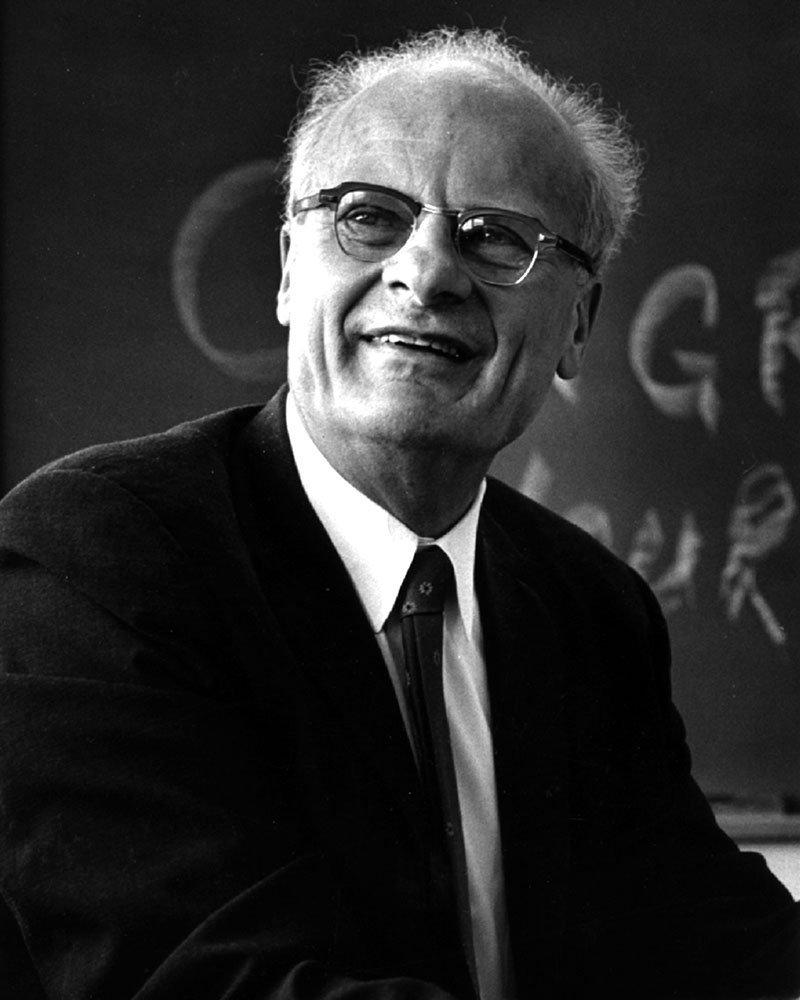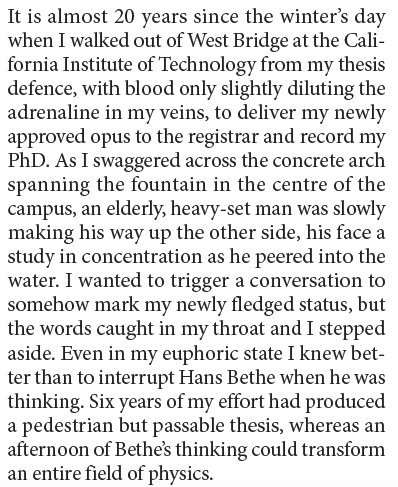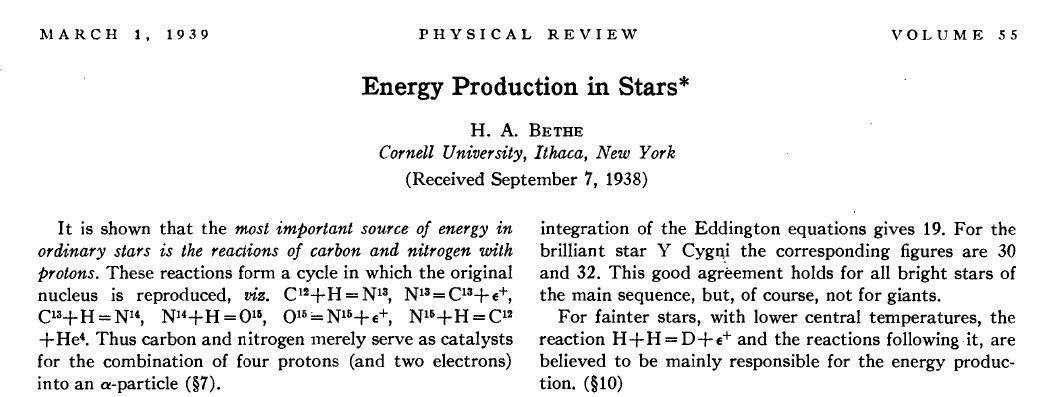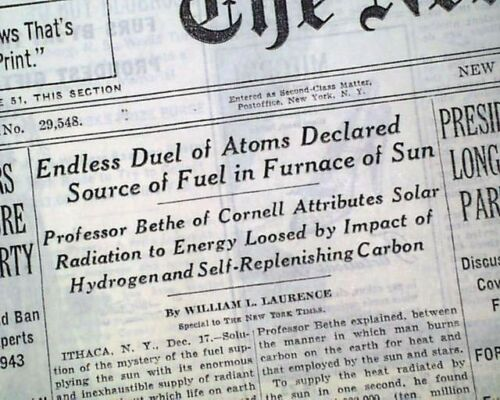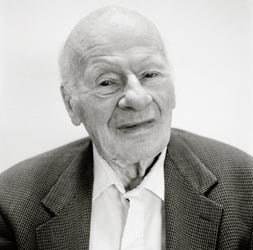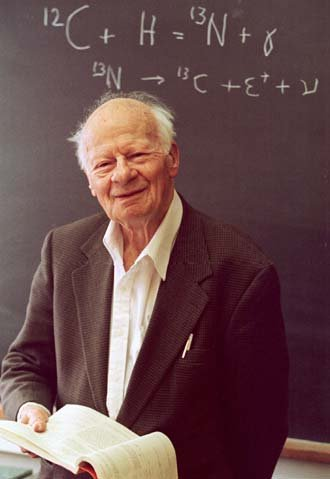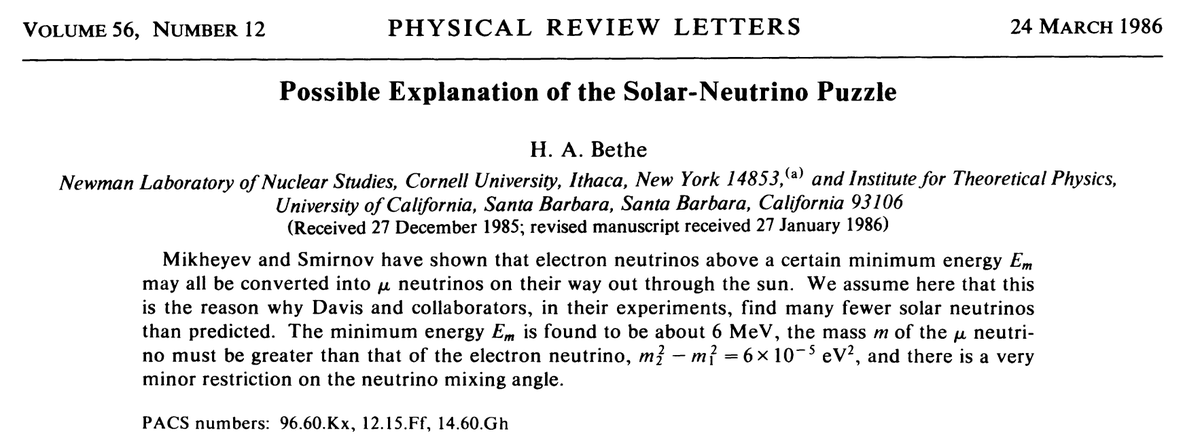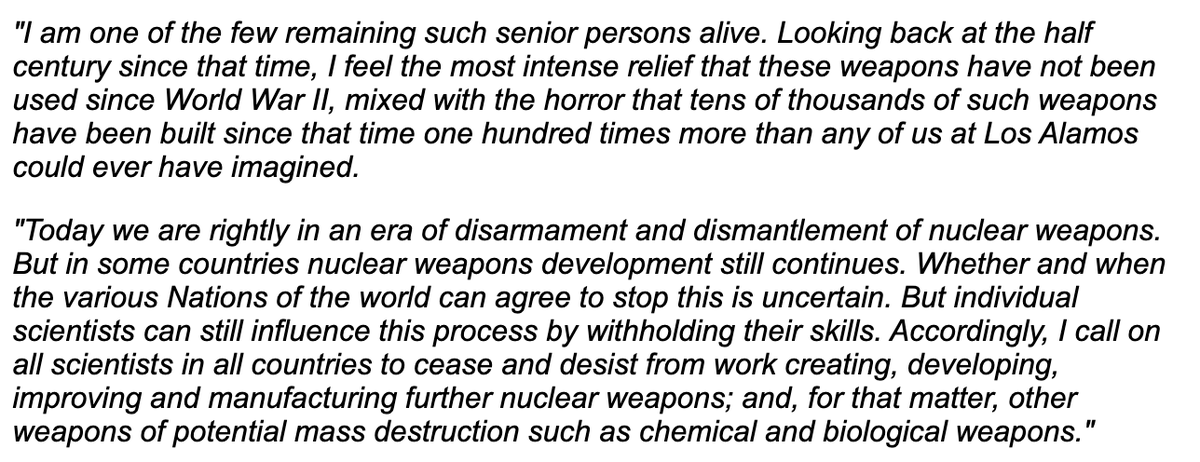Thread: Hans Bethe was born on July 2, 1906. Bethe made so many contributions to so many fields of physics that the astronomer John Bahcall joked that there was a conspiracy by dozens of people to publish their paper under the name 'Hans Bethe'.
Bethe's stamina, concentration, all-encompassing knowledge of physics and contributions made him a legend. His most famous student, Freeman Dyson, once joked to me that if he really focused on a problem he could be one tenth as good as Bethe. Physicist David Wark captured the awe
Bethe's Nobel Prize winning paper is characteristic of his style. He lays out the problem, suggests a possible solution, then examines 33 reactions and discards most of them systematically before zeroing in on the jugular; a small set of reactions that fuel the sun and stars.
Reporter William Laurence who later covered the Manhattan Project wrote about Bethe's solution of energy production from nuclear fusion in the sun in 1938 for the New York Times. I miss those kinds of headlines.
This photo of Bethe was taken at Los Alamos only a few months before he died. He was almost ninety-nine then: his last paper on supernovae was submitted after his demise; he had published his first paper when he was eighteen. A force of nature and humanity who left a great legacy
Bethe also became one of fascism's greatest gifts to this country; an immigrant and patriot who quietly and truly made the United States great without fanfare. "Understand what I love about America", he told his mentor Arnold Sommerfeld in a moving letter http://wavefunction.fieldofscience.com/2016/06/understand-what-i-love-about-america.html
He was also an immensely influential teacher who put Cornell on the map. Among his students and colleagues during his more than 60 years there were Freeman Dyson, Richard Feynman and Robert Wilson. Several won Nobel Prizes later, the most recent being David Thouless in 2016.
Bethe won the Nobel Prize for solving an elemental problem that had puzzled humanity for hundreds of years: What makes the sun shine? It took him until 1968 to get the prize because they were figuring out which one of his many contributions to recognize.
What made Bethe truly unique, however, was that he wasn't just an extraordinary scientist but a great human being. He became known as the conscience of the physics community, fighting against nuclear proliferation after playing a key role in the creation of the bomb.
In the 1970s, Bethe started another career in astrophysics, working out solar neutrino production and supernovae explosions with his collaborator Gerry Brown. His colleagues say they know nobody in 20th century physics who has done work of such caliber in their 80s and 90s.

 Read on Twitter
Read on Twitter